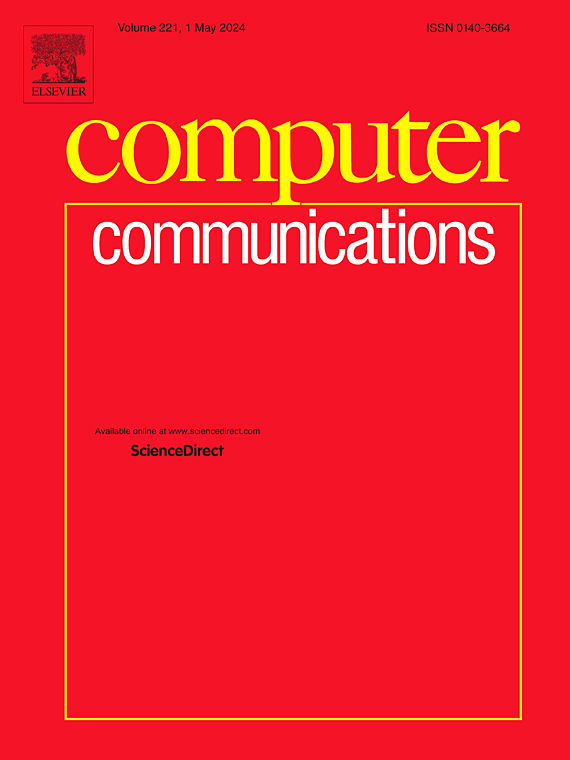ASAP 2.0: Autonomous & proactive detection of malicious applications for privacy quantification in 6G network services
IF 4.5
3区 计算机科学
Q1 COMPUTER SCIENCE, INFORMATION SYSTEMS
引用次数: 0
Abstract
While 6G networks, reliant on software, promise significant advancements, the proliferation of diverse applications deployed closer to users poses considerable privacy challenges. To counter this, privacy-first software development, as advocated by DevPrivOps, becomes essential. While Privacy-Enhancing Technologies (PETs) are frequently used, their limitations are well-documented. DevPrivOps strives to reinforce software privacy through prioritization, compliance, transparency, optimization, and informed decision-making. A promising alternative to PETs involves quantifying privacy to guide development and pinpoint potential threats, thus enhancing application privacy before deployment on OpenSlice network services. Privacy-centric malicious application detection, amongst other features, is a key component of this privacy quantification framework, serving to inform users of potential harm from such applications. In this study, we focus on privacy-centric malicious application detection. ASAP 2.0, an autonomous system, identifies these threats by scrutinizing requested application permissions. Building on its antecedent, ASAP 2.0 employs a tuned autoencoder trained via unsupervised learning. By analyzing reconstruction errors, it differentiates between potentially harmful and benign applications. A dynamically adjusted threshold assists in the decision-making process. Our model, validated on three public datasets, achieved an average Matthews Correlation Coefficient (MCC) of 0.976, outperforming baseline models such as Logistic Regression and Decision Trees.

ASAP 2.0:自动主动检测6G网络服务中用于隐私量化的恶意应用
虽然依赖软件的 6G 网络有望取得重大进展,但部署在用户身边的各种应用程序的激增也给隐私保护带来了相当大的挑战。为了应对这一挑战,DevPrivOps 所倡导的隐私优先软件开发变得至关重要。虽然隐私增强技术(PETs)被频繁使用,但其局限性已得到充分证明。DevPrivOps 致力于通过优先级、合规性、透明度、优化和知情决策来加强软件隐私保护。除 PET 外,一种很有前景的替代方法是量化隐私,以指导开发并找出潜在威胁,从而在 OpenSlice 网络服务上部署前加强应用程序的隐私保护。除其他功能外,以隐私为中心的恶意应用程序检测是这种隐私量化框架的关键组成部分,可用于告知用户此类应用程序的潜在危害。在本研究中,我们将重点关注以隐私为中心的恶意应用程序检测。ASAP 2.0 是一个自主系统,它通过仔细检查所请求的应用程序权限来识别这些威胁。在其前身的基础上,ASAP 2.0 采用了通过无监督学习训练的调整自动编码器。通过分析重构错误,它可以区分潜在的有害应用和良性应用。动态调整的阈值有助于决策过程。我们的模型在三个公共数据集上进行了验证,平均马修斯相关系数(MCC)达到 0.976,优于逻辑回归和决策树等基线模型。
本文章由计算机程序翻译,如有差异,请以英文原文为准。
求助全文
约1分钟内获得全文
求助全文
来源期刊

Computer Communications
工程技术-电信学
CiteScore
14.10
自引率
5.00%
发文量
397
审稿时长
66 days
期刊介绍:
Computer and Communications networks are key infrastructures of the information society with high socio-economic value as they contribute to the correct operations of many critical services (from healthcare to finance and transportation). Internet is the core of today''s computer-communication infrastructures. This has transformed the Internet, from a robust network for data transfer between computers, to a global, content-rich, communication and information system where contents are increasingly generated by the users, and distributed according to human social relations. Next-generation network technologies, architectures and protocols are therefore required to overcome the limitations of the legacy Internet and add new capabilities and services. The future Internet should be ubiquitous, secure, resilient, and closer to human communication paradigms.
Computer Communications is a peer-reviewed international journal that publishes high-quality scientific articles (both theory and practice) and survey papers covering all aspects of future computer communication networks (on all layers, except the physical layer), with a special attention to the evolution of the Internet architecture, protocols, services, and applications.
 求助内容:
求助内容: 应助结果提醒方式:
应助结果提醒方式:


